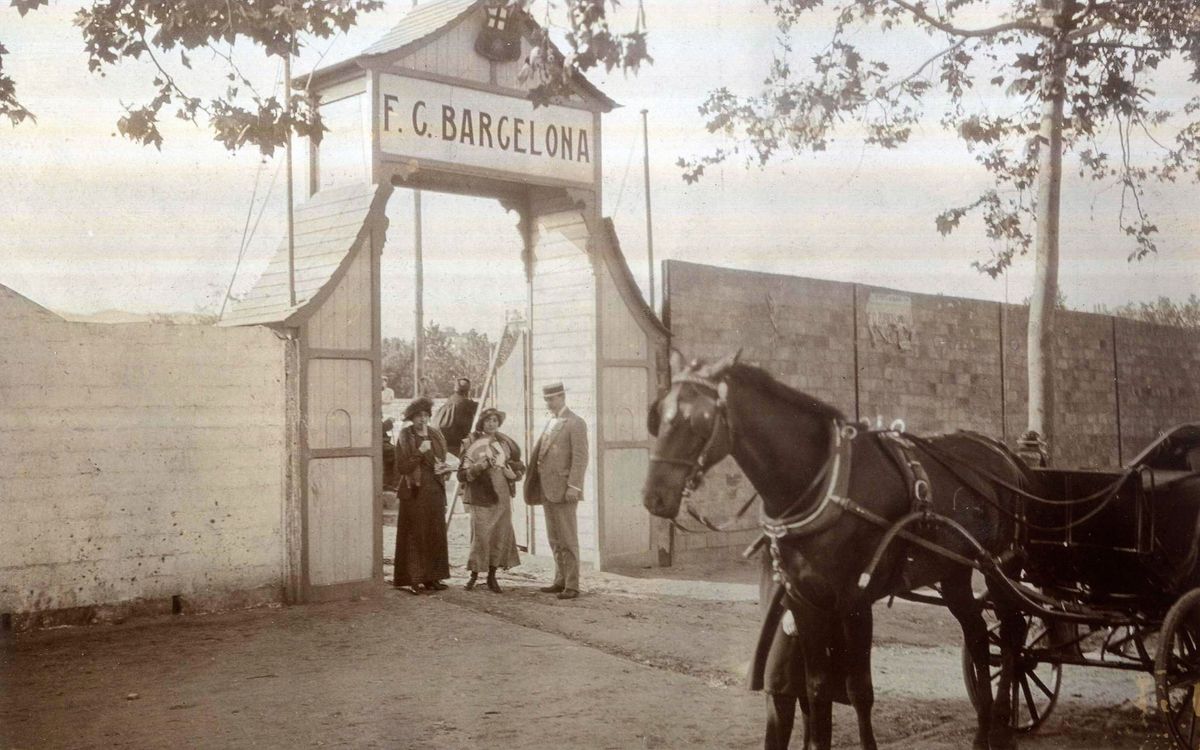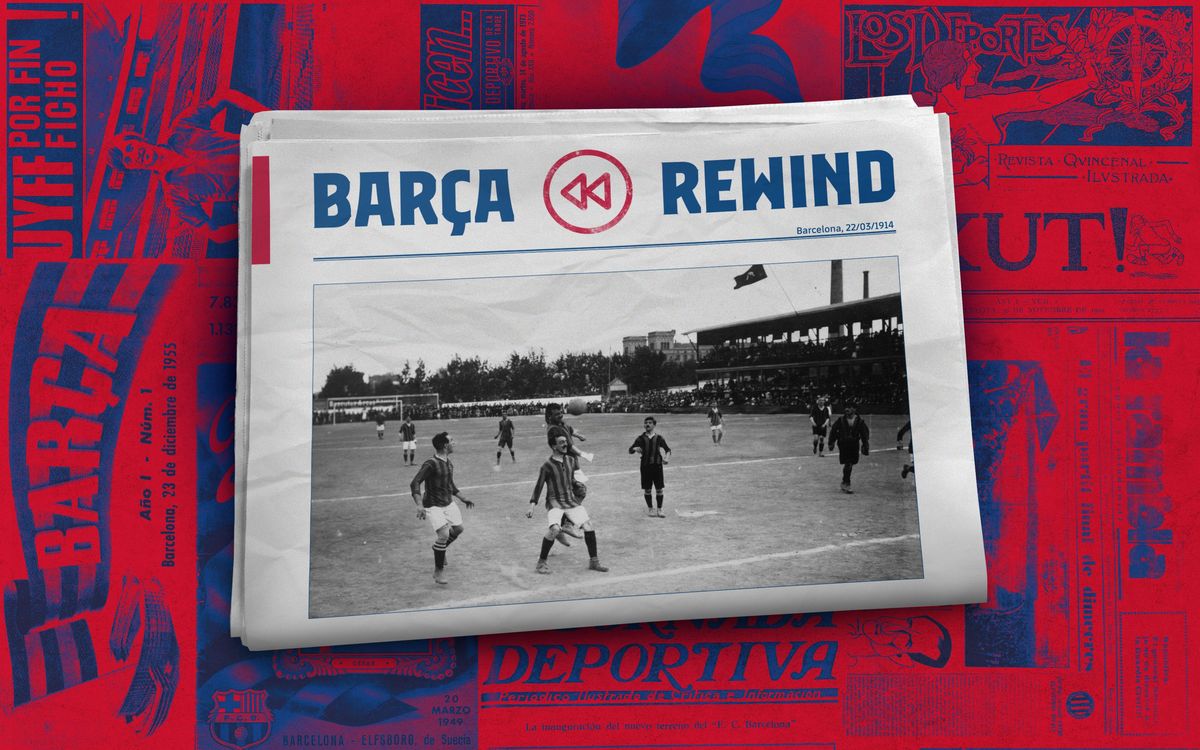Barça Rewind: First game at Camp de la Industria
- label.aria.viber Viber
- label.aria.whatsapp WhatsApp
- label.aria.twitter Twitter
- label.aria.facebook Facebook
- label.aria.messenger Messenger
- label.aria.link label.aria.tick Copy link
14 March 1909 was a milestone date in the history of FC Barcelona. After ten years of playing on makeshift pitches on whatever vacant plots of land were available, that was the date of the very first game at the Camp de la Industria, the club’s very first ground of its own.
Not a big story
One would expect its opening day to have been a grand occasion, but there was little or no ceremony about it. A regular Catalan Championship game against FC Català ended 2-2, and there was barely a mention in the local press.
El Mundo Deportivo was far more concerned with a Greco-Roman wrestling competition, the Copa Catalunya rally, various cycling stories and even skiing news from Switzerland. A few lines about the football match were squeezed in on page 4, only mentioning in passing that it was played at the new stadium.
Barça reborn
The lack of interest needs to be understood in the context of the era. Despite the promise when Joan Gamper founded the club in 1899, FC Barcelona went into gradual decline over the following decade.
In 1909, it hadn’t even won the Catalan Championship for three years and its membership had dropped to just 38 men. Barça would probably have disappeared completely had Gamper not stepped in as president with plans to fire new life into his beloved club, including his wish for the club to own its own ground.
Bare basics
Neither was there anything particularly special about Camp de la Industria in March 1909. Teams moved fields all the time, and like all the other sites, this one was just a patch of land with seats positioned around the edges.
There wasn’t even anywhere for the players to get changed. They would arrive for games with their kit already on, and afterwards would take turns to wash themselves down with a hosepipe.
But Gamper had ambitions. Over the next few years, the city’s first ‘proper’ football stadium would be erected, funded out of the pockets of the club’s own directors. Opened in 1916, its wooden grandstand with seating for 1,500 people was unlike anything that Spain had seen before. It even became the first ground in the country to be fitted with floodlights.

The field itself was remarkably small, and that was how the ground came to be known as the Escopidora (‘spittoon’).
Counting standing room too, its total capacity was about 6,000, which included the people used to sit along the top of the outer wall, meaning all that was visible from the street below was a long row of bottoms (‘culs’ en Catalan, and hence the nickname ‘culers’, literally ‘bummers’).
As the stadium developed, so did FC Barcelona's fortunes. By 1922, when it moved to an even bigger venue, Les Corts, it had become by far the biggest club in the city and had won the Spanish Cup five times.
Where did it go?
The site is what is now the square surrounded by C/Urgell, C/Villarroel, C/Londres and C/París (which this section of C/Industria is now called), a couple of blocks up from Hospital Clinic, although there is absolutely nothing there today to suggest that this was once the location of a football ground.
There used to be a plaque on the wall of number 252 C/Urgell commemorating the site, curiously with the wrong date of the opening game (14 May 10909). Sadly, it fell off and cracked during building work in 2009 and has never been replaced.
However, in a way the stadium is back. The brand new Estadi Johan Cruyff at the Ciutat Esportiva, designed by Batlle i Roig Arquitectura, now being used by the Barça, women’s and U19 teams, took its direct inspiration from the Camp de la Industria. Obviously the new venue has considerably more modern features, but the basic size and layout is the same.
- label.aria.viber Viber
- label.aria.whatsapp WhatsApp
- label.aria.twitter Twitter
- label.aria.facebook Facebook
- label.aria.messenger Messenger
- label.aria.link label.aria.tick Copy link

